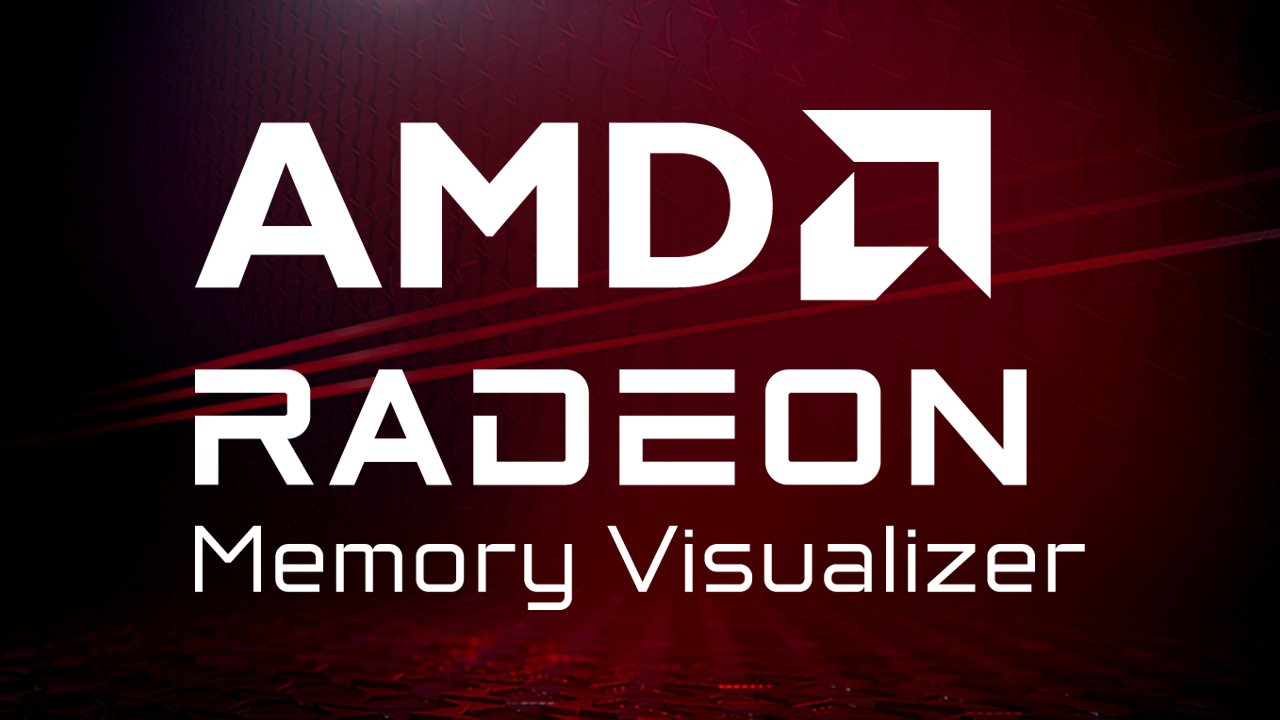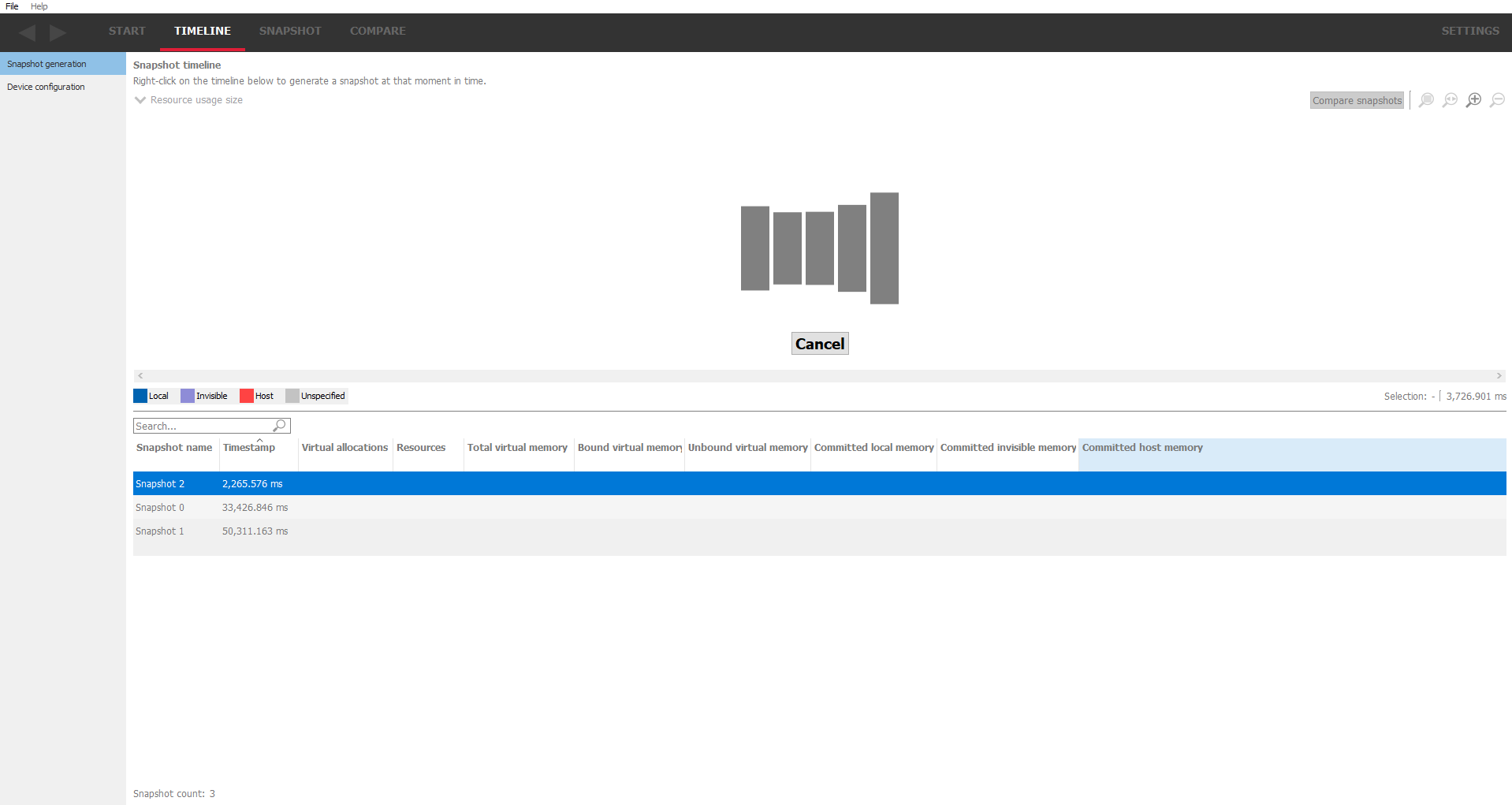
AMD Radeon™ Memory Visualizer
AMD Radeon™ Memory Visualizer (RMV) is a tool to allow you to gain a deep understanding of how your application uses memory for graphics resources.
The latest version of Radeon™ Memory Visualizer is now available for download!
Building on the concepts introduced in the previous RMV release to better visualize overlapped aliased resources, version 1.8 includes enhancements to the Resource usage size timeline. Version 1.7 features improvements to the Resource overview pane that takes into account resources bound to the same overlapped virtual memory regions. Memory usage is applied to resource types based on their priority (which matches the order of resource types displayed in the legend; highest priority towards the left and lowest towards the right). You can learn more about the Resource overview changes in this blog. When calculating usage sizes on the Resource usage size timeline, version 1.8 uses the same resource type priorities. The memory of the resources that overlap (alias) is now counted only once. Hovering the mouse over any point on the timeline will display a tooltip with the memory used for each type of resource. In addition, this latest release also includes unbound memory on the Resource usage size timeline (shown in gray). More details on how the size of aliased resources is calculated can be found in the RMV documentation.
The screenshots below compare the Resource usage size timeline in version 1.7 against the new timeline in version 1.8.
 V1.7 Resource usage size timeline
V1.7 Resource usage size timeline
 V1.8 Resource usage size timeline
V1.8 Resource usage size timeline
Calculating the usage sizes takes a considerable amount of time to build the timeline graph. Depending on the complexity of the trace, it could take minutes to complete. For this reason, the default timeline view when a trace is first loaded has been switched to Committed. The Resource usage size timeline view is not processed until the user has selected it (using the dropdown listbox above the timeline’s upper left corner). At this point, processing begins and the loading animation is displayed while calculations are being made. A Cancel button is located under the load animation while processing is in progress. If clicked, the Cancel button is hidden and the timeline reverts to the previously selected view. The load animation may remain for a short period of time while reverting back to the previous timeline view.
 Load animation
Load animation
The enhanced Resource usage size timeline gives a clearer understanding of how memory is being used as well as the amount of unbound memory that’s available at any point during a memory trace. Armed with this knowledge, developers can make the best use of available memory for their game titles.
You can find out more about RMV, including links to the release binaries on GitHub and the full release notes list, on our product page. Your feedback is incredibly valuable to us and helps drive the RMV roadmap forward, so if you want something and it makes sense then just let us know!
